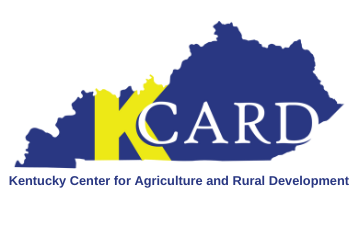What did it take for that local milk to make it into your ice cream? Or for the local carrots to make it into your grocery bag? Of course, the farmer had to care for the cow or grow the carrots, as well as harvest and pack their product. They may have been required to seek certain safety certifications or quality standards in order to sell their product. Farmers may also utilize a local processor or sell their produce to a nearby aggregation facility, or a manufacturer may use a commercial kitchen to turn local blueberries into jam. Even for a local product that may not travel very far, whether it is sold unprocessed or as a “value-added” product, there can be a number of steps to take care of before the consumer gets to enjoy it!
With that in mind, the final set of maps in the Kentucky Local Food System Story Map take a closer look at some of the larger local food industries and supporting infrastructure in Kentucky, including where they are clustered and where there may be a lack of farms or infrastructure to serve the local population. For some local products, such as meat, supporting local infrastructure is essential. Specifically, in order for a farmer to sell his/her meat product to a consumer, store, or restaurant, that meat product must be processed in a USDA-inspected facility.
This is why the first map in this section not only shows the number of local meat producers in each county, but also shows the locations of all USDA-certified meat processors offering custom slaughter services to local producers. At least 120 local meat producers in Kentucky who sell directly to consumers or to local businesses have been identified, and 26 meat processors who offer custom processing services under USDA inspection or have USDA certification pending.
For an interactive view of the maps with county data, view the full website here.
Similarly, the next map shows the number of dairies by county, and overlays that with the local dairies that are producing a value-added product with their milk in the form of bottled milk, cheese, ice cream, or butter. Currently, there are over 300 dairies in Kentucky, but only 13 of those dairies also run a facility that makes a value-added product.
Most local produce in Kentucky is sold direct-to-consumer through farmers markets, CSA’s, on-farm stores, etc. However, if a farm wants to sell to certain wholesalers or stores, they must undergo a food safety audit, called a Good Agricultural Practices (GAP) audit, to do so. Oftentimes, these are larger-scale farms where it makes financial sense to sell wholesale and invest time and money into acquiring GAP certification. The map below shows where those GAP-audited farms are located in relation to produce aggregation points, many of which require this food safety certification.
KCARD has been involved in many efforts across the state to expand the capacity of the local food system, whether through assisting a farmer to access a new market or a meat processor to find and apply for funding. Although KCARD’s Local Food Expansion Initiative is in its final year, we will continue to work with farms and agribusinesses and partner with other local food organizations to grow Kentucky’s local food system.
Are you a producer looking to expand sales beyond direct-to-consumer or a buyer looking to purchase local food? Contact us at kcard@kcard.info or 849-550-3972 today.




